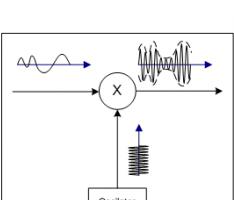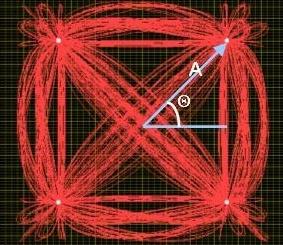The panel of any modern radio has an AM-FM switch. As a rule, an ordinary consumer does not think about what these letters mean, it is enough for him to remember that on FM there is his favorite VHF radio station broadcasting a signal in stereo and with excellent quality, and on AM you can catch the “Mayak”. If you delve into technical details at least at the level of user instructions, it turns out that AM is amplitude modulation, and FM is frequency modulation. How do they differ?

In order for music to sound from the speaker of the radio, the sound signal must undergo certain changes. First of all, it should be made suitable for radio broadcasting. Amplitude modulation was the first way that communications engineers learned how to transmit speech and music programs on the air. The American Fessenden in 1906 using a mechanical generator received oscillations of 50 kilohertz, which became the first carrier frequency in history. Then he solved the technical problem in the simplest way by installing a microphone at the output of the winding. Under the influence of sound waves on the coal powder inside the membrane box, its resistance changed, and the value of the signal from the generator to the transmitting antenna decreased or increased depending on them. Thus, amplitude modulation was invented, that is, changing the magnitude of the carrier signal so that the shape of the envelope line corresponded to the shape of the transmitted signal. In the twenties, mechanical generators were replaced by electron-tube ones. This significantly reduced the dimensions and weight of the transmitters.

Frequency modulation differs from amplitude modulation in that the magnitude of the carrier wave remains unchanged, its frequency changes. With the development of the electronic base and circuitry, other methods have appeared with the help of which the information signal "sat down" at the radio frequency. A change in the phase and pulse width gave the name to phase and pulse-width modulation. It seemed that amplitude modulation as a way of radio broadcasting was outdated. But it turned out differently, she retained her position, although in a slightly modified form.

Growing demands on information saturation of frequencies prompted engineers to look for ways to increase the number of channels transmitted on the same wavelength. The capabilities of multichannel translation are determined by Kotelnikov’s theorem and the Nyquist barrier, however, in addition to quantizing the signal, it became possible to increase the information load on the communication channel by changing the phase. Quadrature-amplitude modulation is a transmission method in which different signals are transmitted at the same frequency, 90 degrees shifted in phase relative to each other. Four-phase form a quadrature or a combination of two components described by the trigonometric functions sin and cos, hence the name.
Quadrature amplitude modulation is widespread in digital communications. At its core, it is a combination of phase and amplitude modulation.